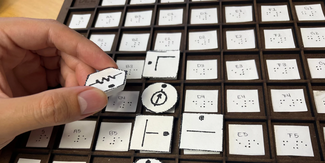
Making engineering education accessible to learners who have blindness and low-vision
A new study reveals which accessibility tools can improve learning for students who are blind – and what gaps remain.
In a recent study, Stanford researchers worked together with the first student who is blind to enroll in ENGR 40M, an introductory electrical engineering course, to create a detailed account of how the student navigated the class. By comparing the student’s experiences in the class to those of students who have sight, the researchers identified accessibility gaps as well as solutions to reduce those barriers for students who have blindness and low vision (BLV). The work won the Best Diversity, Equity, and Inclusion Paper award at the 2024 American Society for Engineering Education (ASEE) conference.
Understanding hurdles in electrical engineering
Previous research has found that engineering students with disabilities report feeling ostracized, while also lacking role models and adequate support to accomplish learning objectives. And while students who have BLV often opt for computer science because it’s more accessible with the use of tools such as screen readers, many programs still require introductory coursework in electrical engineering.
One such introductory class is ENGR 40M, a hands-on course in which students learn to design, build, and test electronics including a solar charger and electrocardiogram. In 2022, Trisha Kulkarni, now a master’s student in computer science, became the first blind student to complete the course. Aya Mouallem, a PhD candidate in electrical engineering, teamed up with Trisha to better understand accessibility hurdles in the course through a retrospective analysis.
[...]
Read the full article, “Making engineering education accessible to blind and low-vision learners,” Stanford School of Engineering.